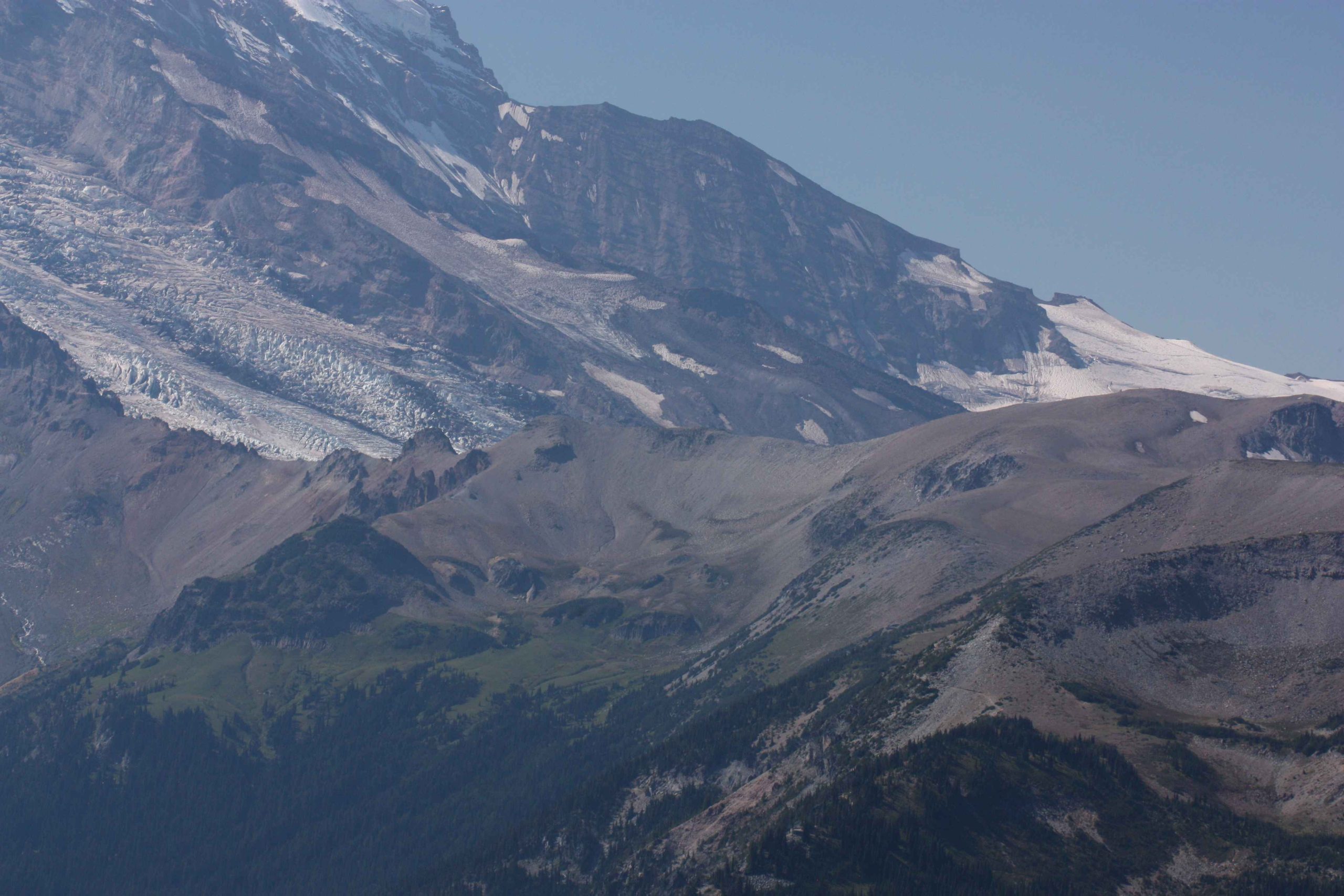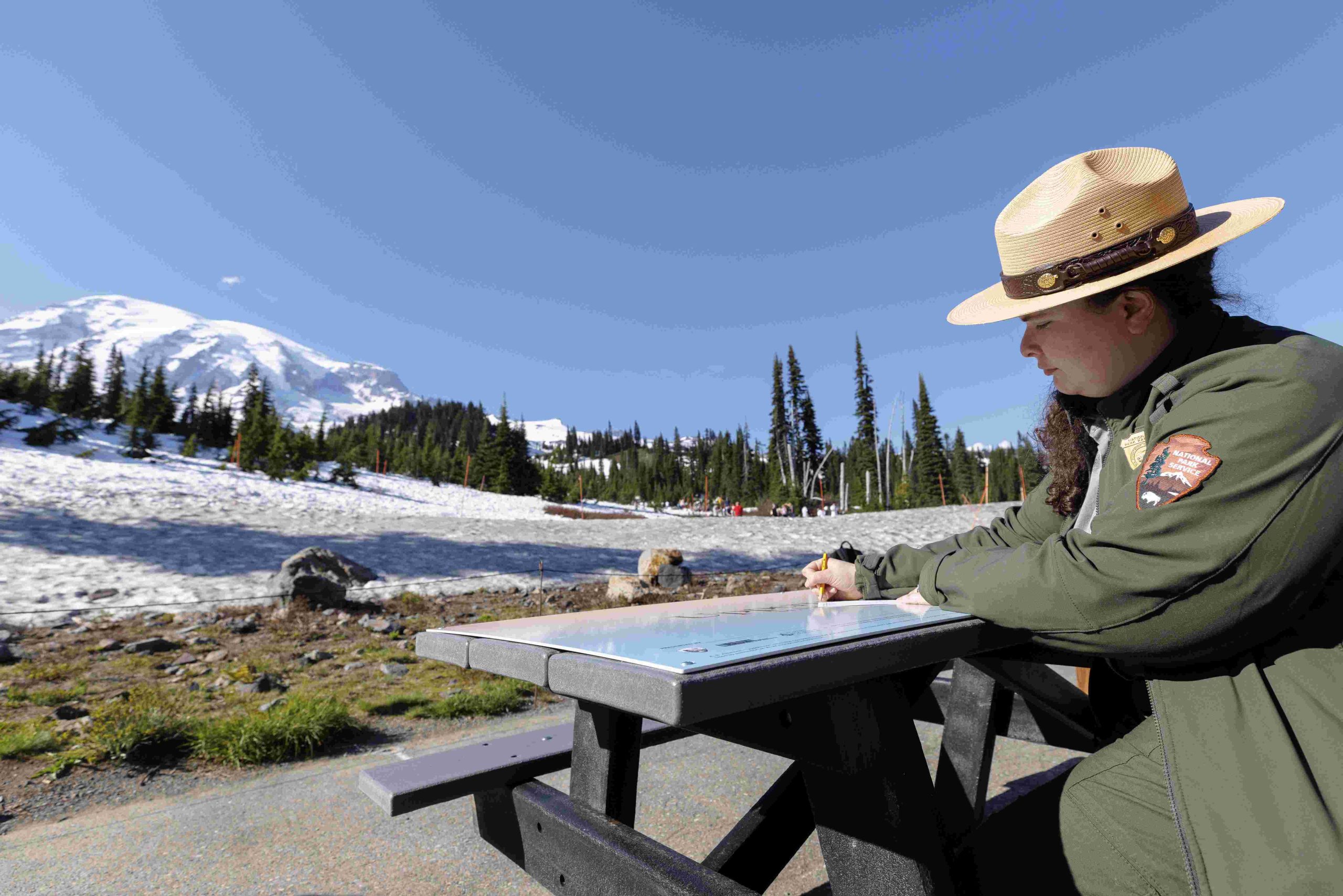Mount Rainier is a towering volcano in Washington state, standing at 14,411 feet tall. It’s the highest peak in the Cascade Range and a popular destination for nature lovers. This ancient mountain, about 500,000 years old, is home to diverse wildlife and stunning landscapes. From its glaciers to its wildflower meadows, Mount Rainier offers endless opportunities for exploration and learning. Let’s dive into the fascinating world of this iconic American landmark.
What Makes Mount Rainier So Special?

Mount Rainier is not just any mountain – it’s an active volcano with a rich history and unique features. Here are some key facts that make it stand out:
- Height: 14,411 feet (4,392 meters)
- Location: Washington state, USA
- Type: Active stratovolcano
- Last eruption: 1894-1895
- Nickname: “The Mountain”
Mount Rainier is the centerpiece of Mount Rainier National Park, which was established in 1899. It’s a place of natural wonder, offering visitors the chance to see glaciers, wildflower meadows, and diverse wildlife all in one location.
What Animals Call Mount Rainier Home?

The ecosystems of Mount Rainier support a wide variety of animals. Here’s a list of some creatures you might spot during a visit:
- Black Bears
- Elk (also known as Wapiti)
- Mountain Goats
- Black-tailed Deer
- Pumas (also called Cougars or Mountain Lions)
- Marmots
- Various bird species (over 180 types!)
Each of these animals has adapted to life on the mountain in unique ways. For example, mountain goats have special hooves that help them climb steep, rocky slopes, while marmots hibernate during the long, cold winters.
How Old is Mount Rainier and When Did It Last Erupt?
Mount Rainier has a long and fascinating geological history:
- Age: Approximately 500,000 years old
- Last eruption: Between 1894 and 1895
Despite its last eruption being over a century ago, Mount Rainier is still considered an active volcano. Scientists closely monitor the mountain for any signs of increased activity.
What Are Some Kid-Friendly Trails at Mount Rainier?
Mount Rainier National Park offers several hiking trails that are perfect for families with children. Here are some popular options:
| Trail Name | Distance | Difficulty | Features |
|---|---|---|---|
| Trail of the Shadows | 0.7 miles | Easy | Meadow, old-growth forest, historic cabin |
| Nisqually Vista Trail | 1.5 miles round trip | Easy to moderate | Views of Nisqually Glacier |
| Grove of the Patriarchs Trail | 1.5 miles round trip | Easy | Old-growth forest with massive trees |
| Wonderland Trail (sections) | Varies | Moderate to challenging | Diverse landscapes, mountain views |
These trails offer a range of experiences, from easy walks through ancient forests to more challenging hikes with spectacular views of glaciers and the mountain itself.
What Unique Geographical Features Does Mount Rainier Have?
Mount Rainier boasts several remarkable geographical features:
Glaciers
- Emmons Glacier: The largest glacier by area in the continental United States
- Carbon Glacier: The largest glacier by volume in the continental United States
These glaciers play a crucial role in the mountain’s ecosystem and are a major source of water for the surrounding areas.
Ecosystems
- Subalpine Meadows: Located above the timberline, these meadows burst with colorful wildflowers during summer.
- Alpine Meadows: Found at higher elevations, characterized by sparse vegetation and rocky terrain.
Notable Landmarks
- Paradise: A popular area known for its wildflower meadows and hiking trails
- Sunrise: The highest point in the park accessible by car, offering panoramic views
How Does Mount Rainier Affect the Surrounding Environment?
Mount Rainier has a significant impact on its surroundings:
- Weather Influence: The mountain creates its own weather patterns, often trapping moisture on its western slopes.
- Water Source: Its glaciers and snowfields provide water for several major rivers in Washington state.
- Biodiversity Hotspot: The varied elevations and microclimates support a diverse range of plant and animal species.
- Volcanic Hazards: As an active volcano, Mount Rainier poses potential risks to nearby communities, including lahars (volcanic mudflows).
What Can Kids Learn from Visiting Mount Rainier?
A trip to Mount Rainier offers numerous educational opportunities for children:
- Geology: Understanding volcanic processes and glacier formation
- Ecology: Learning about different ecosystems and how plants and animals adapt to mountain environments
- Conservation: Appreciating the importance of preserving natural areas
- Outdoor Skills: Developing hiking and nature observation skills
- History: Exploring the cultural significance of the mountain to Native American tribes and early settlers
How Can Kids Prepare for a Visit to Mount Rainier?
To make the most of a trip to Mount Rainier, kids can:
- Learn basic facts about the mountain and its ecosystems
- Practice identifying common plants and animals
- Understand park rules and safety guidelines
- Pack appropriate clothing and gear for changing weather conditions
- Bring a journal or sketchbook to record observations
By preparing in advance, children can have a more enriching and enjoyable experience at Mount Rainier.
Mount Rainier is a treasure trove of natural wonders and learning opportunities for kids. From its towering peak to its diverse wildlife, the mountain offers endless fascination for young explorers. Whether hiking through wildflower meadows, observing glaciers, or learning about volcanic processes, children can gain a deeper appreciation for the natural world through their experiences at Mount Rainier.
References:
1. https://kids.britannica.com/students/article/Mount-Rainier-National-Park/629965
2. https://visitrainier.com/mt-rainier-fact-sheet/
3. https://www.nps.gov/mora/learn/kidsyouth/fast-facts-for-kids.htm
